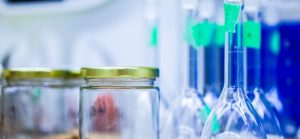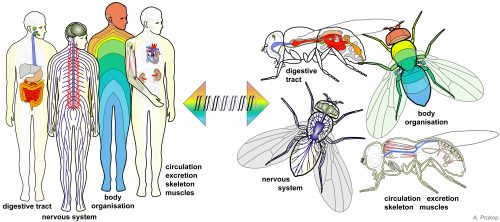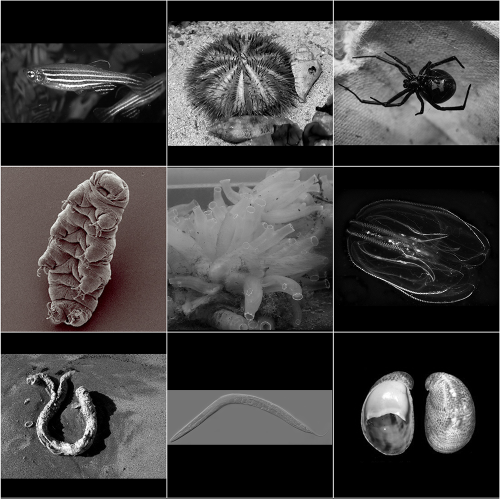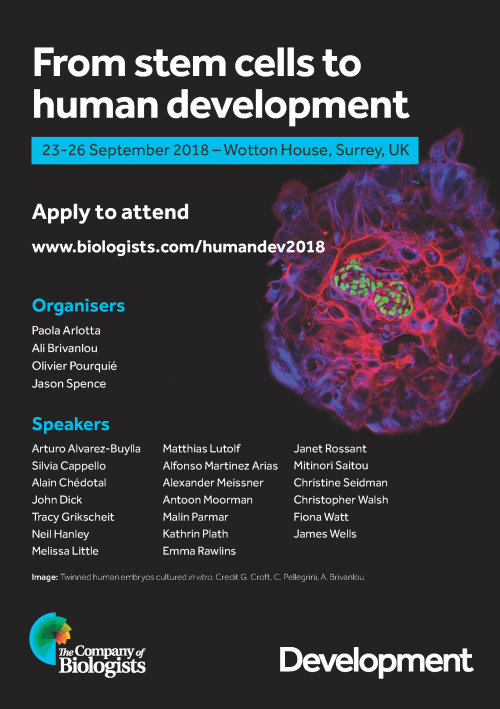In Development this week (Vol. 144, Issue 24)
Posted by Seema Grewal, on 18 December 2017
Here are the highlights from the current issue of Development – the last one of the year! Happy reading…and happy holidays!
Branched actin keeps Nrf2 in check in the skin
 The Arp2/3 complex is responsible for the assembly of branched actin filaments. Although its cellular functions are well understood, less is known about the consequence of its disruption in developing animals. To investigate the function of Arp2/3 in the skin, Metello Innocenti and colleagues (p. 4588) have generated mice specifically lacking Arpc4, a core component of the complex, in the epidermis (referred to as Arpc4 eKO). These animals developed progressive psoriasis-like lesions soon after birth, accompanied by characteristic dermal inflammation. Differential gene expression analyses reveal upregulation of inflammatory and dermatological disease-related pathways in the affected Arpc4 eKO tissue. The mutant mice show increased epidermal levels and activity of Nrf2, a master regulator of epidermal homeostasis, the hyperactivation of which was previously found to result in severe keratinocyte abnormalities similar to those observed in the Arpc4 eKO. Furthermore, the authors show that Nrf2 interacts with the actin cytoskeleton, and a functional Arp2/3 complex sequesters Nrf2 to the cytoskeleton, effectively blocking its pro-psoriatic transcription factor activity. Intriguingly, Arpc4 appears to be downregulated in human psoriatic lesions and chemically induced psoriasis-like lesions in mice, thus providing further support to the authors’ model whereby loss of Arp2/3 is involved in the pathogenesis of psoriasis.
The Arp2/3 complex is responsible for the assembly of branched actin filaments. Although its cellular functions are well understood, less is known about the consequence of its disruption in developing animals. To investigate the function of Arp2/3 in the skin, Metello Innocenti and colleagues (p. 4588) have generated mice specifically lacking Arpc4, a core component of the complex, in the epidermis (referred to as Arpc4 eKO). These animals developed progressive psoriasis-like lesions soon after birth, accompanied by characteristic dermal inflammation. Differential gene expression analyses reveal upregulation of inflammatory and dermatological disease-related pathways in the affected Arpc4 eKO tissue. The mutant mice show increased epidermal levels and activity of Nrf2, a master regulator of epidermal homeostasis, the hyperactivation of which was previously found to result in severe keratinocyte abnormalities similar to those observed in the Arpc4 eKO. Furthermore, the authors show that Nrf2 interacts with the actin cytoskeleton, and a functional Arp2/3 complex sequesters Nrf2 to the cytoskeleton, effectively blocking its pro-psoriatic transcription factor activity. Intriguingly, Arpc4 appears to be downregulated in human psoriatic lesions and chemically induced psoriasis-like lesions in mice, thus providing further support to the authors’ model whereby loss of Arp2/3 is involved in the pathogenesis of psoriasis.
Tbx6 seals mesodermal fate in the tail bud
 Neuromesoderm progenitors (NMPs) are a distinct stem cell population that express both the mesoderm marker brachyury (T) and the neural marker Sox2, and are required for axial growth in vertebrates. They are capable of binary fate choice, differentiating as either neural or mesodermal progenitors. Tbx6, a downstream target of T, has been proposed to act as a fate switch, stimulating the mesodermal differentiation of NMPs, but the timing of this fate commitment is unclear. On p. 4522, Ramkumar Sambasivan and co-workers report the identification of cells in the mouse primitive streak and later in the tail bud that co-express Tbx6 and Sox2. These Tbx6+/Sox2+ cells represent a novel transient subpopulation of NMPs primed for mesodermal differentiation. Tbx6-null NMPs in mouse embryos are incapable of mesodermal commitment and default to neuronal differentiation, which strikingly results in ectopic formation of neural tubes. The authors show that this phenotype is stronger in more posterior regions, suggesting a differential requirement for Tbx6 in trunk versus tail NMPs. These data confirm the proposed ‘fate switch’ role of Tbx6 in mesodermal commitment of NMPs, and further our understanding of NMP differentiation and their role in body axis elongation.
Neuromesoderm progenitors (NMPs) are a distinct stem cell population that express both the mesoderm marker brachyury (T) and the neural marker Sox2, and are required for axial growth in vertebrates. They are capable of binary fate choice, differentiating as either neural or mesodermal progenitors. Tbx6, a downstream target of T, has been proposed to act as a fate switch, stimulating the mesodermal differentiation of NMPs, but the timing of this fate commitment is unclear. On p. 4522, Ramkumar Sambasivan and co-workers report the identification of cells in the mouse primitive streak and later in the tail bud that co-express Tbx6 and Sox2. These Tbx6+/Sox2+ cells represent a novel transient subpopulation of NMPs primed for mesodermal differentiation. Tbx6-null NMPs in mouse embryos are incapable of mesodermal commitment and default to neuronal differentiation, which strikingly results in ectopic formation of neural tubes. The authors show that this phenotype is stronger in more posterior regions, suggesting a differential requirement for Tbx6 in trunk versus tail NMPs. These data confirm the proposed ‘fate switch’ role of Tbx6 in mesodermal commitment of NMPs, and further our understanding of NMP differentiation and their role in body axis elongation.
FGF signalling: making matrix in the lung
 Alveologenesis – the repeated division and growth of alveoli to expand the surface area in the lung – is one of the least understood stages of postnatal lung development. Defective alveologenesis results in bronchopulmonary dysplasia, a disorder often observed in premature infants. FGF signalling and the extracellular matrix (ECM) protein elastin are known to be important for alveologenesis, but the underlying mechanisms are poorly understood. On p. 4563, Xin Sun and colleagues dissect the roles of FGFR3 and FGFR4 in alveologenesis. Using both global and conditional Fgfr3;4 double-mutant mouse models, they show that the earliest apparent phenotype – preceding any defects in alveolar organisation – is the improper deposition of elastin fibres. Levels of elastin protein are initially unchanged, but fibre organisation is disrupted, suggesting that this may be the underlying cause of the alveolar simplification observed in the mutants. Furthermore, the phenotype can be partially rescued by depletion of Mfap5, a regulator of elastin deposition that is upregulated in the Fgfr3;4 mutant. Lineage-specific inactivation of Fgfr3;4 demonstrated that normal alveologenesis requires functional Fgfr3 and Fgfr4 in the mesenchyme but not the epithelium, which is consistent with the known role of fibroblasts in ECM organisation. The authors suggest that a defective elastin ECM physically interferes with alveolar septa formation, resulting in simplified alveoli characteristic of bronchopulmonary dysplasia.
Alveologenesis – the repeated division and growth of alveoli to expand the surface area in the lung – is one of the least understood stages of postnatal lung development. Defective alveologenesis results in bronchopulmonary dysplasia, a disorder often observed in premature infants. FGF signalling and the extracellular matrix (ECM) protein elastin are known to be important for alveologenesis, but the underlying mechanisms are poorly understood. On p. 4563, Xin Sun and colleagues dissect the roles of FGFR3 and FGFR4 in alveologenesis. Using both global and conditional Fgfr3;4 double-mutant mouse models, they show that the earliest apparent phenotype – preceding any defects in alveolar organisation – is the improper deposition of elastin fibres. Levels of elastin protein are initially unchanged, but fibre organisation is disrupted, suggesting that this may be the underlying cause of the alveolar simplification observed in the mutants. Furthermore, the phenotype can be partially rescued by depletion of Mfap5, a regulator of elastin deposition that is upregulated in the Fgfr3;4 mutant. Lineage-specific inactivation of Fgfr3;4 demonstrated that normal alveologenesis requires functional Fgfr3 and Fgfr4 in the mesenchyme but not the epithelium, which is consistent with the known role of fibroblasts in ECM organisation. The authors suggest that a defective elastin ECM physically interferes with alveolar septa formation, resulting in simplified alveoli characteristic of bronchopulmonary dysplasia.
Braving the cold with β-Tubulin 97EF
 Although mammals have internal mechanisms for regulating body temperature, the vast majority of organisms are ectotherms, meaning that their body temperature is dictated by the external environment. Temperature fluctuations significantly affect cellular homeostasis, but the molecular mechanisms underlying these effects are currently poorly understood. Multiple lines of evidence suggest that microtubules are sensitive to cold, with suboptimal temperatures causing their disassembly. Christian Lehner and colleagues (p. 4573) employed global gene expression analyses of Drosophila S2R+ cells grown over a range of temperatures to identify β-Tubulin 97EF, a previously poorly characterised β-tubulin paralogue, to be among the most temperature-responsive. This upregulation was confirmed in vivo, and exhibited distinct tissue specificity, with expression being most prominent in the gut and the hemocytes. Despite the mild phenotypic consequences of β-Tubulin 97EF inactivation, likely confirming functional redundancy between β-Tubulin paralogues, βTub97EF mutant Drosophila embryos were more sensitive to the cold than their wild-type counterparts. Moreover, although there was no correlation between β-Tubulin 97EF levels and microtubule assembly rates, microtubules containing β-Tubulin 97EF were less prone to destabilisation at lower temperatures. Taken together, these results identify β-Tubulin 97EF as a cold-regulated isoform that promotes microtubule stability, and highlight the importance of mechanisms to allow acclimation to temperature variations.
Although mammals have internal mechanisms for regulating body temperature, the vast majority of organisms are ectotherms, meaning that their body temperature is dictated by the external environment. Temperature fluctuations significantly affect cellular homeostasis, but the molecular mechanisms underlying these effects are currently poorly understood. Multiple lines of evidence suggest that microtubules are sensitive to cold, with suboptimal temperatures causing their disassembly. Christian Lehner and colleagues (p. 4573) employed global gene expression analyses of Drosophila S2R+ cells grown over a range of temperatures to identify β-Tubulin 97EF, a previously poorly characterised β-tubulin paralogue, to be among the most temperature-responsive. This upregulation was confirmed in vivo, and exhibited distinct tissue specificity, with expression being most prominent in the gut and the hemocytes. Despite the mild phenotypic consequences of β-Tubulin 97EF inactivation, likely confirming functional redundancy between β-Tubulin paralogues, βTub97EF mutant Drosophila embryos were more sensitive to the cold than their wild-type counterparts. Moreover, although there was no correlation between β-Tubulin 97EF levels and microtubule assembly rates, microtubules containing β-Tubulin 97EF were less prone to destabilisation at lower temperatures. Taken together, these results identify β-Tubulin 97EF as a cold-regulated isoform that promotes microtubule stability, and highlight the importance of mechanisms to allow acclimation to temperature variations.
PLUS:
An interview with Claudio Stern
 Claudio Stern is the J. Z. Young Professor of Anatomy at University College London (UCL), UK. His lab studies the processes that regulate patterning and cell diversity in the early embryos of vertebrates, mostly in chick. Claudio, an elected fellow of the Royal Society, the UK Academy of Medical Sciences, and the Latin-American Academy of Medical Sciences, was awarded the 2006 Waddington Medal by the British Society of Developmental Biology, and he also served as President of the International Society for Developmental Biology (ISDB) from 2010-2013. At the 18th Congress of the ISDB (Singapore, June 2017), Claudio was awarded the ISDB’s Ross Harrison Prize, which recognises an individual’s outstanding contributions to developmental biology. We met with Claudio to ask him more about his career, his thoughts on the field, and his advice for early career researchers. Read the Spotlight article on p. 4473.
Claudio Stern is the J. Z. Young Professor of Anatomy at University College London (UCL), UK. His lab studies the processes that regulate patterning and cell diversity in the early embryos of vertebrates, mostly in chick. Claudio, an elected fellow of the Royal Society, the UK Academy of Medical Sciences, and the Latin-American Academy of Medical Sciences, was awarded the 2006 Waddington Medal by the British Society of Developmental Biology, and he also served as President of the International Society for Developmental Biology (ISDB) from 2010-2013. At the 18th Congress of the ISDB (Singapore, June 2017), Claudio was awarded the ISDB’s Ross Harrison Prize, which recognises an individual’s outstanding contributions to developmental biology. We met with Claudio to ask him more about his career, his thoughts on the field, and his advice for early career researchers. Read the Spotlight article on p. 4473.
The TGFβ superfamily in Lisbon: navigating through development and disease
 The 10th FASEB meeting ‘The TGFβ Superfamily: Signaling in Development and Disease’ took place in Lisbon, Portugal, in July 2017. Here, the findings presented at the meeting, highlighting the important contributions of TGFβ family signaling to normal development, adult homeostasis and disease, and some novel mechanisms by which TGFβ signals are transduced. Read the Meeting Review on p. 4476.
The 10th FASEB meeting ‘The TGFβ Superfamily: Signaling in Development and Disease’ took place in Lisbon, Portugal, in July 2017. Here, the findings presented at the meeting, highlighting the important contributions of TGFβ family signaling to normal development, adult homeostasis and disease, and some novel mechanisms by which TGFβ signals are transduced. Read the Meeting Review on p. 4476.
The hallmarks of cell-cell fusion
 Cell-cell fusion is essential for fertilization and organ development. Dedicated proteins known as fusogens are responsible for mediating membrane fusion. However, until recently, these proteins either remained unidentified or were poorly understood at the mechanistic level. Here, review how fusogens surmount multiple energy barriers to mediate cell-cell fusion. See their Review article on p. 4481
Cell-cell fusion is essential for fertilization and organ development. Dedicated proteins known as fusogens are responsible for mediating membrane fusion. However, until recently, these proteins either remained unidentified or were poorly understood at the mechanistic level. Here, review how fusogens surmount multiple energy barriers to mediate cell-cell fusion. See their Review article on p. 4481
Mechanisms of gene regulation in human embryos and pluripotent stem cells
 While the principles that establish and regulate pluripotency have been well defined in the mouse, it has been difficult to extrapolate these insights to the human system due to species-specific differences and the distinct developmental identities of mouse versus human embryonic stem cells. In their Review, examine genome-wide approaches to elucidate the regulatory principles of pluripotency in human embryos and stem cells, and highlight where differences exist in the regulation of pluripotency in mice and humans. Read their Review article on p.4496
While the principles that establish and regulate pluripotency have been well defined in the mouse, it has been difficult to extrapolate these insights to the human system due to species-specific differences and the distinct developmental identities of mouse versus human embryonic stem cells. In their Review, examine genome-wide approaches to elucidate the regulatory principles of pluripotency in human embryos and stem cells, and highlight where differences exist in the regulation of pluripotency in mice and humans. Read their Review article on p.4496


 (No Ratings Yet)
(No Ratings Yet)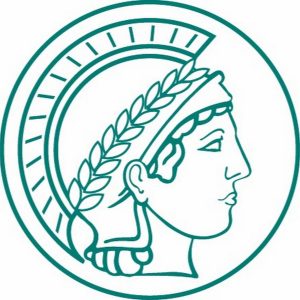
 (1 votes)
(1 votes)